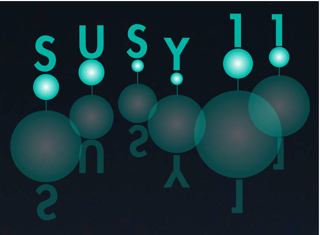Speaker
Wei-Chih Huang
(Northwestern University)
Description
We consider a new scenario for supersymmetric decaying dark matter without $R$-parity violation in theories with goldstini, which arise if supersymmetry is broken independently by multiple sequestered sectors. The uneaten goldstino naturally has a long lifetime and decays into three-body final states including the gravitino, which escapes detection, and two visible particles. The goldstini low-energy effective interactions are derived, which can be non-universal and allow the dark matter to be leptophilic, in contrast to the case of a single sector supersymmetry breaking. In addition, the three-body decay with a missing particle gives a softer spectrum. Consequently, it is possible to fit both the $e^+/e^-$ excess observed by the PAMELA and the $e^++e^-$ measurements by the Fermi-LAT using universal couplings to all three lepton flavors or 100\% branching fraction into electrons/positrons, both of which are disfavored in the conventional scenario of dark matter decays into two or four visible particles without missing energy.
